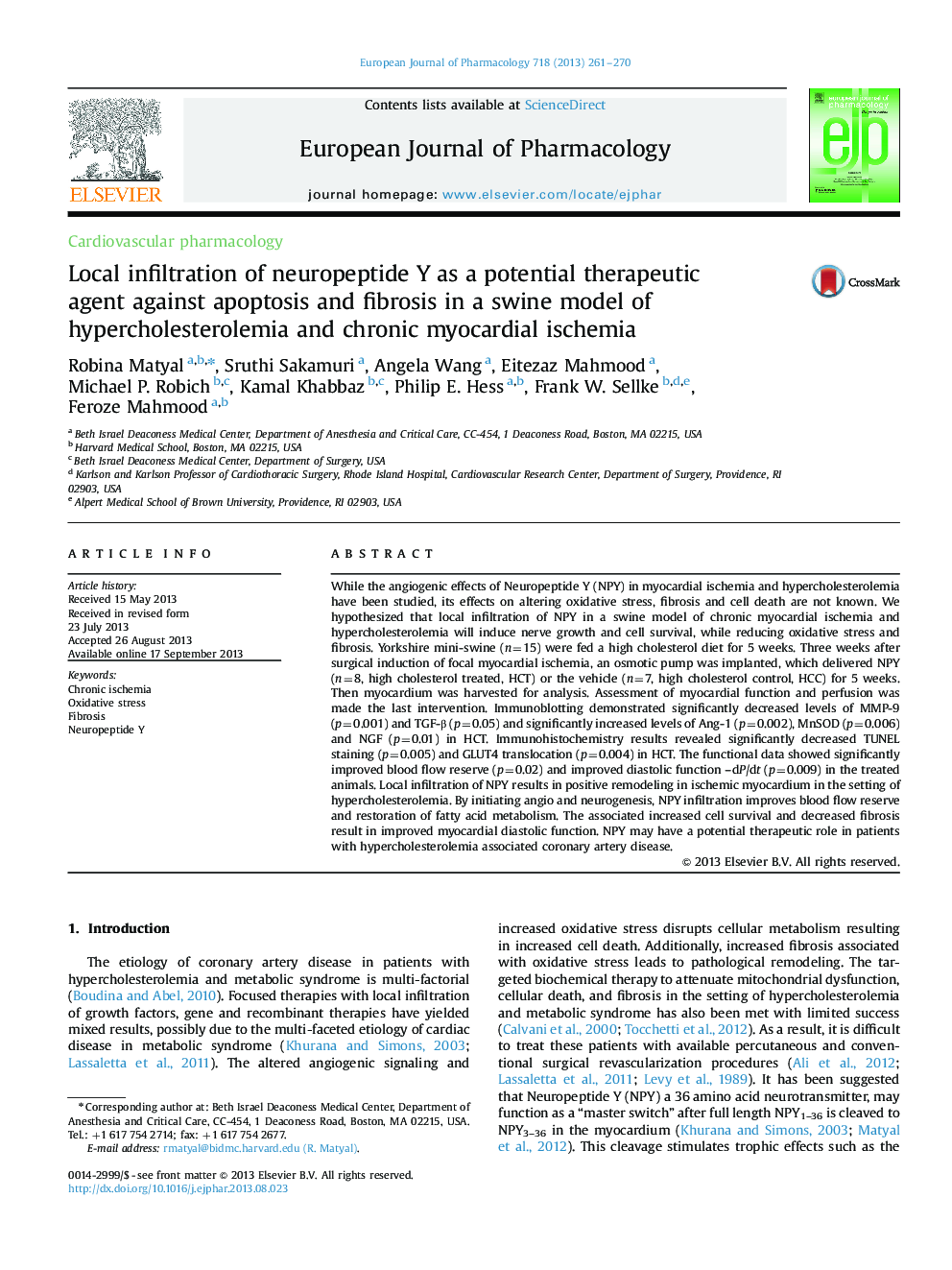| Article ID | Journal | Published Year | Pages | File Type |
|---|---|---|---|---|
| 5828410 | European Journal of Pharmacology | 2013 | 10 Pages |
Abstract
While the angiogenic effects of Neuropeptide Y (NPY) in myocardial ischemia and hypercholesterolemia have been studied, its effects on altering oxidative stress, fibrosis and cell death are not known. We hypothesized that local infiltration of NPY in a swine model of chronic myocardial ischemia and hypercholesterolemia will induce nerve growth and cell survival, while reducing oxidative stress and fibrosis. Yorkshire mini-swine (n=15) were fed a high cholesterol diet for 5 weeks. Three weeks after surgical induction of focal myocardial ischemia, an osmotic pump was implanted, which delivered NPY (n=8, high cholesterol treated, HCT) or the vehicle (n=7, high cholesterol control, HCC) for 5 weeks. Then myocardium was harvested for analysis. Assessment of myocardial function and perfusion was made the last intervention. Immunoblotting demonstrated significantly decreased levels of MMP-9 (p=0.001) and TGF-β (p=0.05) and significantly increased levels of Ang-1 (p=0.002), MnSOD (p=0.006) and NGF (p=0.01) in HCT. Immunohistochemistry results revealed significantly decreased TUNEL staining (p=0.005) and GLUT4 translocation (p=0.004) in HCT. The functional data showed significantly improved blood flow reserve (p=0.02) and improved diastolic function -dP/dt (p=0.009) in the treated animals. Local infiltration of NPY results in positive remodeling in ischemic myocardium in the setting of hypercholesterolemia. By initiating angio and neurogenesis, NPY infiltration improves blood flow reserve and restoration of fatty acid metabolism. The associated increased cell survival and decreased fibrosis result in improved myocardial diastolic function. NPY may have a potential therapeutic role in patients with hypercholesterolemia associated coronary artery disease.
Related Topics
Life Sciences
Neuroscience
Cellular and Molecular Neuroscience
Authors
Robina Matyal, Sruthi Sakamuri, Angela Wang, Eitezaz Mahmood, Michael P. Robich, Kamal Khabbaz, Philip E. Hess, Frank W. Sellke, Feroze Mahmood,
